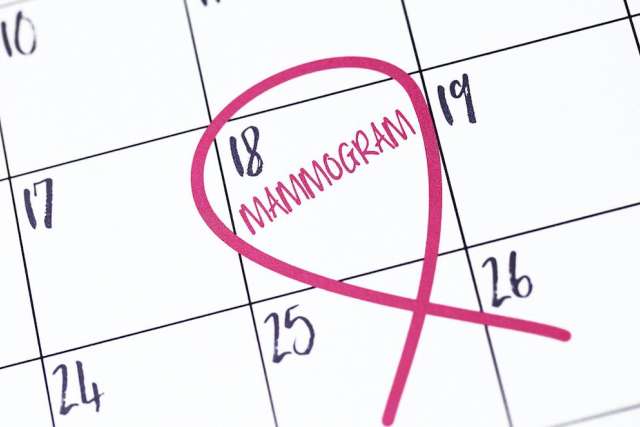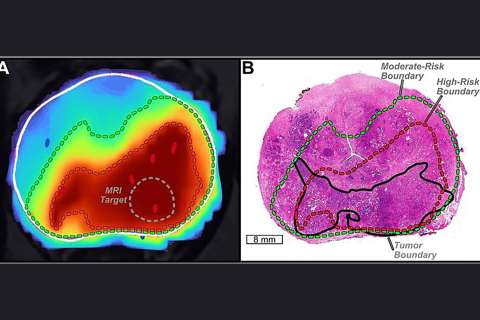In Oct. 2020, Deanna Attai, MD, FACS, hypothesized that the COVID-19 pandemic may cause a drop in breast cancer screenings, leading to poorer health outcomes and treatment delays.
Dr. Attai, a UCLA Health breast surgeon, said she was particularly concerned about the women who lost their health insurance coverage as unemployment from the pandemic skyrocketed.
“Loss of health insurance, financial instability and an inability to pay – for the diagnostic studies, the biopsy and the subsequent cancer treatment – certainly has the potential to have a major impact on cancer outcomes and survival rates,” Dr. Attai said, “and to exacerbate the health care disparities we already have.”
A recent study found an 87% decline in breast cancer screenings and an 84% drop in cervical cancer screenings received by women through the Center for Disease Control and Prevention's (CDC) National Breast and Cervical Cancer Early Detection Program in April 2020, compared with the previous five-year averages for that month. The program provides low-income, uninsured and underserved women access to breast and cervical cancer screenings and diagnostic services.
The study “highlights a decline in cancer screening among women of racial and ethnic minority groups with low incomes when their access to medical services decreased at the beginning of the pandemic,” according to Amy DeGroff, PhD, MPH, CDC health scientist and lead author.
- Among Hispanic women, breast cancer screenings declined by 84%. Among American Indian/Alaskan Native women, they declined by 98%.
- Cervical cancer screening declines ranged from 82% among Black women to 92% among Asian Pacific Islander women.
In the United States, Black and Hispanic women have the highest rates of cervical cancer incidence (8.3 and 8.9 per 100,000 women, respectively), compared with white women (7.3 per 100,000), according to the study.
Breast cancer rates among white women and Black women are similar; however, Black women have the highest rate of deaths due to breast cancer (26.9 per 100,000 women) compared with white women (19.4 per 100,000 women).
Screenings for colon cancer were also paused due to the pandemic, says Roshan Bastani, PhD, co-director of the Cancer Control and Survivorship Program at the UCLA Jonsson Comprehensive Cancer Center.
Colorectal cancer is the second most common cause of cancer-related deaths in the U.S. Among Black Americans, colorectal cancer is 20% higher than in white Americans, and Black Americans are 40% more likely than white Americans to die from the disease, according to the American Cancer Society.
Dr. Bastani, who is also director of the UCLA Kaiser Permanente Center for Health Equity and a professor in the UCLA Fielding School of Public Health, says that besides detecting colon cancer early, the screenings can also detect pre-cancerous polyps. Finding and treating those might mean that patients “don’t even get cancer in the first place,” she says.
The U.S. Preventive Services Task Force recently updated the recommendation for colorectal cancer screening to begin at age 45, rather than at 50, as was previously the standard. The problem? Clinics were not offering non-essential medical services during the pandemic.
“So even if you wanted a screening, you couldn't get it,” Dr. Bastani says.
The disparities of colon cancer are rooted in long-existing policies and social determinants of health, according to a CNN opinion article by Folasade May, MD, PhD, director of the Melvin and Bren Simon Gastroenterology Quality Improvement Program and assistant professor of medicine at the David Geffen School of Medicine at UCLA.
Factors that influence these disparities include home environments, lifestyles, medical co-morbidities, differences in screening utilization, lack of access to insurance and unequal treatment by health care systems.
Women especially face many hurdles to get preventive screenings, says Dr. Attai, from a lack of health insurance coverage to an inability to take time off due to caring for children and the elderly.
She says health care providers can help mitigate these barriers by:
- Providing access to financial assistance programs for diagnostic studies, biopsies and treatment;
- Extending hours to after work and weekends to provide more access for women that are unable to get time off or get adequate childcare;
- Validating parking and expanding facilities into the community near lines of transportation.
Since clinics have reopened, “it does appear that more women are returning for screenings,” Dr. Attai says. “Many mammogram facilities are more backed up than usual regarding appointments, so it appears that many women are trying to get back on track.”
In addition to primary care physicians, Dr. Bastani says, specialty care providers should also offer information about various cancer screenings – when to do it, how often and where.
“Early detection is so important,” she says. “If you utilize multiple strategies, you can effectively reach more people.”
Learn more about cancer screenings with a guide from UCLA Health.



